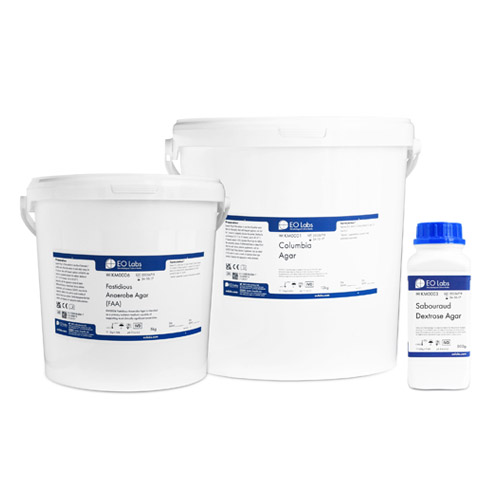Mueller Hinton Agar

Mueller Hinton Agar is used as a base to make various media for antimicrobial susceptibility testing by the disk diffusion method as described by Bauer-Kirby. First described by Mueller and Hinton, Mueller Hinton Agar has been approved as the definitive medium for antimicrobial susceptibility testing by European Committee on Antimicrobial Susceptibility Testing (EUCAST), Clinical and Laboratory Standards Institute (CLSI) and is compliant with ISO16782:2016.
KM0183, when prepared as unsupplemented Mueller Hinton Agar, is suggested by EUCAST and CLSI for non-fastidious organisms such as Enterobacterales, Pseudomonas spp., Stenotrophomonas maltophilia, Acinetobacter spp., Staphylococcus spp., Enterococcus spp., Aeromonas spp., Achromobacter xylosoxidans, Vibrio spp., Bacillus spp. and Burkholderia pseudomallei.
KM0183, when prepared supplemented with 5% horse blood and nicotinamide adenine dinucleotide (NAD), is suggested by EUCAST and CLSI for fastidious organisms such as Streptococcus pneumoniae, Streptococcus groups A, B, C and G, Viridans group streptococci, Haemophilus influenzae, Moraxella catarrhalis, Listeria monocytogenes, Pasteurella multocida, Campylobacter jejuni and coli, Corynebacterium spp., Aerococcus sanguinicola and urinae and Kingella kingae.
Additionally, according to the UK Standards for Microbiology Investigations, when supplemented appropriately, Mueller Hinton Agar can be used in the process of identifying Haemophilus species and the HACEK group of organisms and Helicobacter species from clinical specimens.
